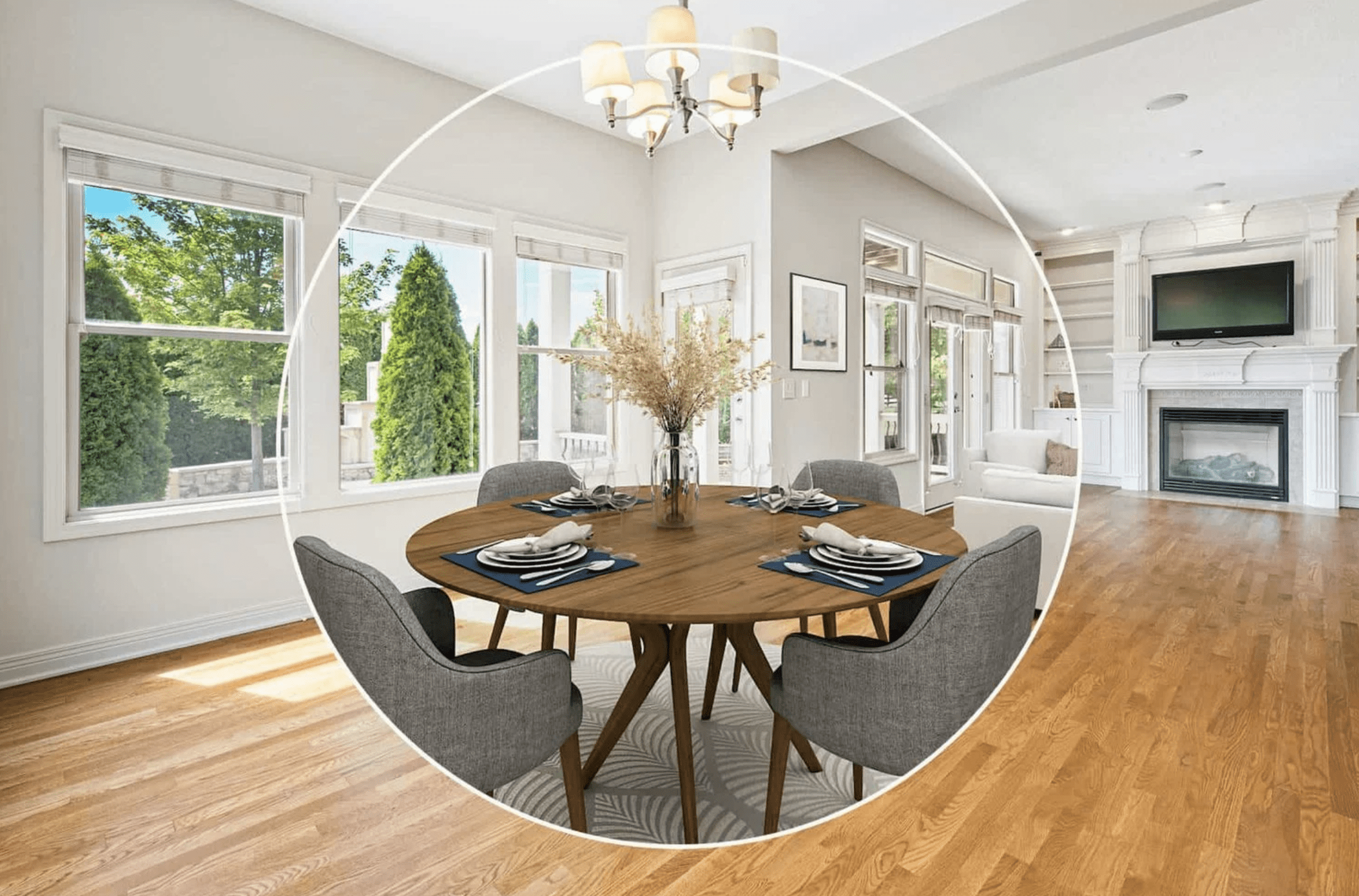
When it comes to preparing a home for sale, staging can make a powerful difference in how buyers perceive the space. But not all staging is created equal. More sellers are now considering virtual staging as an alternative to traditional, in-person staging.
Both approaches have their place, but it’s important to understand the two distinct steps in the buyer journey — and where each type of staging has strengths and limitations.
Step 1: Impressing Buyers Online
The first impression nearly every buyer gets is through online listings. Whether they find your home on Realtor.ca, Instagram, or Facebook, their decision to book a showing usually starts with photos.
Virtual staging shines in this phase. For a fraction of the cost of real staging, you can have empty rooms digitally transformed into beautifully furnished spaces. Some sellers even use AI-powered apps and tools to stage photos at little or no cost.
Cost comparison:
-
Virtual staging: typically $30–$50 per photo — or even free with some AI apps
-
Real staging: around 0.5% of the home’s value (for example, $4,000–$5,000 for a $900,000 home)
When buyers are scrolling through dozens or even hundreds of listings, a visually appealing presentation helps your property stand out. In that sense, virtual staging can be nearly as effective as real staging at getting people through the door.
Of course, poor virtual staging can be worse than no virtual staging… pay attention to quality and make sure the photos are professional quality and realistic. If you are in doubt… share it with 5-10 people and see what they think.
Step 2: Impressing Buyers In Person
Once buyers arrive for a showing, the story changes.
Virtual staging ends at the screen. When buyers walk into an empty or sparsely furnished home, it can feel cold, awkward, and hard to imagine living there.
Real staging, on the other hand, creates a warm, welcoming environment that helps buyers form an emotional connection to the space.
This is where real staging has the clear advantage. It helps buyers understand the scale of each room, how furniture fits, and what it feels like to actually live in the home.
Partial staging — for example, staging just the main floor or a few key rooms — can still help, but it tends to yield partial results. Proper staging involves creating a vision for every space in the home, so buyers never have to guess how a room could be used or furnished.
Virtual staging might get them to the front door, but real staging can help lead to more (and better) offers once they see the home.
Of course, this comes with a higher cost. But remember to look at both options as INVESTMENTS that have the potential to create strong returns.
Is Virtual Staging Enough?
In many cases, virtual staging is an effective solution, especially for vacant properties or tighter budgets. It’s affordable, fast, and effective for generating online interest.
However, if your goal is to create the strongest impression from listing photos to final walkthrough, real staging provides the most impact in person.
Even partial staging is better than none, but fully staged homes consistently show better and sell faster because they feel complete and move-in ready.
Final Thoughts
Virtual staging and real staging are both valuable, but they serve different purposes.
-
Virtual staging helps you get noticed online and encourage more showings.
-
Real staging helps buyers feel at home and confident when they visit in-person.
If you want to get the best possible results both online and in-person, real staging is the most effective option. This ensures buyers are impressed at every step.
But it does take more time, and it is a larger investment. So weigh each option against your timeline and your budget.
The Future of Home Staging
As technology evolves, so will the way buyers experience homes. We’re already seeing early versions of virtual tours and 3D walkthroughs that let buyers explore every angle of a property without ever stepping inside.
In the future, it’s likely that virtual and augmented reality will become even more common.
Buyers could slip on a headset or use their phone to experience a fully staged, three-dimensional model of a home right from their couch. They might virtually “walk” from room to room, see how furniture could look, and even change the décor and paint colours instantly.
While these tools won’t completely replace the feeling of physically being in a space, they will keep raising the bar for what buyers expect — and they will continue to push the industry toward more immersive and interactive experiences.
Thinking about selling your home?
We can help you choose the right staging approach to fit your goals, timeline and budget. Contact us to learn more.